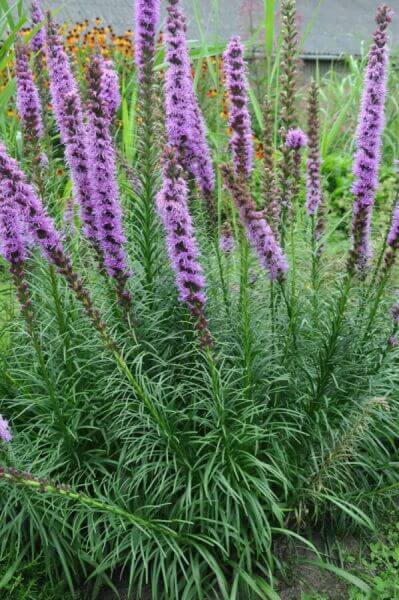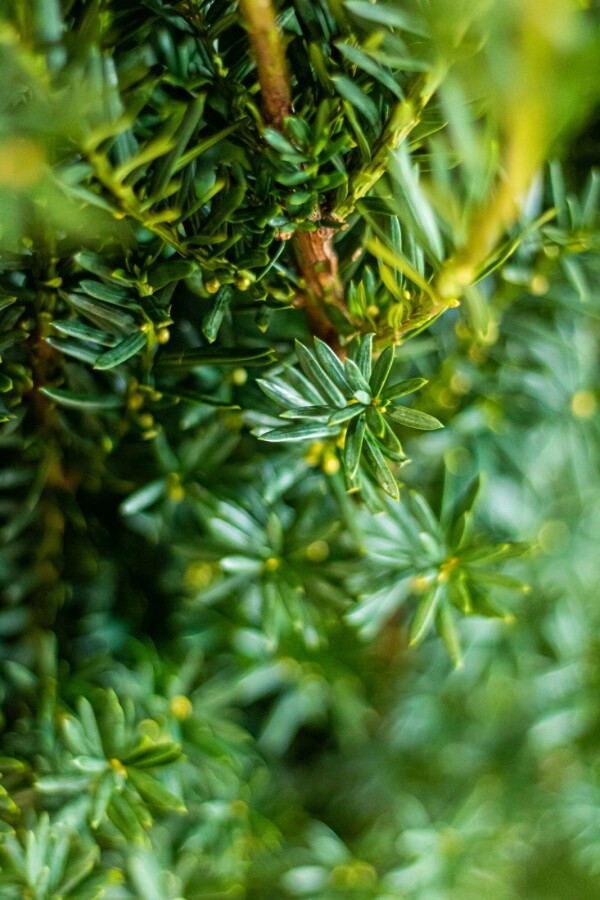Flowering Hedge Plants For Colorful Borders
Flowering Hedge Plants For Colorful Borders
Blog Article
Best Hedging Plants For Public Spaces
Boost your garden's appeal with lush hedge varieties such as Yew (Taxus), Thuja, Laurel, Photinia, and Bamboo, commemorated for their structural integrity and environmental benefits.
Yew and Thuja supply evergreen protection and winter strength, while Laurel provides rapid development and broad, fragrant leaves.
Photinia includes seasonal appeal with its lively red foliage, and Bamboo lends a low-maintenance, serene atmosphere.
These hedges improve air quality, reduce sound, and create tranquil, personal spaces.
Correct planting, spacing, and maintenance ensure energetic growth and eco-friendly harmony.
Check out how these lush varieties can raise your garden's charm and well-being.
Key Takeaways
Change Your Garden With Lush Hedge Varieties
- Select Yew for its thick, evergreen growth and exceptional longevity.
- Select Laurel for its quick development and broad leaves, making sure fast personal privacy.
- Choose Photinia for its lively seasonal foliage, which turns a striking dark red.
- Utilize Bamboo for a low-maintenance, winter-hardy hedge with aesthetic appeal.
- Space plants 2-3 per meter and prune frequently for ideal growth and health.
Popular Hedge Plants
When transforming a garden with lavish hedge varieties, it's vital to think about popular hedge plants such as Yew, Thuja, Laurel, and Photinia due to their unique qualities and advantages.
Yew (Taxus) is extremely esteemed for its longevity and thick, green development, making it a prime choice for enduring landscapes.
Thuja is noted for its evergreen foliage and robust winter season strength.
Photinia adds seasonal vibrancy with red leaves that darken with time, creating dynamic visual appeal.
Laurel offers fast growth and fragrant, broad leaves, suitable for fast personal privacy.
Additionally, Bamboo is an outstanding choice for ambiance, providing a low-maintenance, winter-hardy choice that improves the garden's aesthetic with its stylish, swaying walking canes.
These choices cater to a variety of horticultural requirements and preferences.
Benefits of Garden Hedges
Garden hedges provide a wide variety of advantages, making them an important addition to any landscape. These natural barriers are economical to carry out and supply substantial wind security, enhancing air flow and adding to sound decrease. The dense foliage of hedges like Thuja and Beech makes sure personal privacy by obstructing visibility, creating a serene and remote environment.
Hedges likewise play an important role in microclimate guideline, supplying a steady environment that promotes plant growth and minimizes temperature fluctuations. Their intricate leaf structures filter toxins, enhancing air quality and contributing to a healthier garden environment.
Furthermore, hedges excel in noise decrease, taking in and deflecting sound waves to lower ambient sound levels. This dual functionality of supplying both visual and acoustic privacy boosts the total serenity and aesthetic appeal of any garden.
Planting and Upkeep Tips
For a successful hedge, meticulous preparation of the planting area is crucial. Ensure the soil has correct pH and drainage to support strong root advancement.
Area the plants properly for the chosen types. Water the hedge frequently during its preliminary growth stage, changing as needed with seasonal modifications.
Carry out a methodical bug control and disease avoidance technique, using natural or chemical treatments when essential. Regularly examine for aphids, mites, and fungal infections.
Apply mulch to keep wetness and suppress weeds. Seasonal pruning promotes thick development and air circulation, important for plant health.
Following these guidelines will help you cultivate a vibrant, properly maintained hedge that enhances the charm of your garden.
Spacing and Cutting Guidelines
Spacing and Trimming Standards
Correct spacing and trimming are essential for cultivating healthy, aesthetically appealing hedges. Sufficient spacing ensures each plant receives enough nutrients, light, and air flow.
Follow these guidelines for optimal hedge upkeep:
- Spacing: Position hedge plants 2-3 plants per meter to encourage robust development.
- Pruning Techniques: Regular pruning is vital for keeping wanted hedge height and shape. Trim new development in summer and cut back older wood during winter.
- Seasonal Care: Adjust trimming techniques and schedules according to seasonal requirements to make sure plant health.
- Hedge Height: Routinely monitor and trim to keep the preferred hedge height and accomplish uniform visual appeals.
Sticking to these actions will guarantee your hedge thrives, boosting both the appeal and functionality of your garden.
Choosing the Right Hedge
Choosing the Right Hedge
Selecting the suitable hedge involves evaluating aspects such as fully grown height, foliage density, and ecological resilience. Effective hedge plant choice requires understanding each types' growth characteristics and site-specific versatility.
For example, Yew (Taxus) offers excellent durability and thick growth, while Thuja is notable for its winter season resilience. Furthermore, considering maintenance requirements is essential; fast-growing types like Laurel or Privet demand routine cutting, whereas low-maintenance options like Bamboo or Ivy may be preferable for those looking for minimal maintenance.
Ecological factors such as soil type, light availability, and wetness conditions ought to likewise guide the choice procedure. This cautious technique ensures the picked hedges will flourish, offering both practical and visual benefits to the garden landscape.
Shipment and Planting Advice
To ensure your hedge plants prosper, they should be delivered by specialized couriers and planted without delay upon arrival.
Follow these essential actions for effective planting:
- Soil Preparation: Enrich the soil with organic matter to enhance drain and nutrient material.
- Planting Depth: Create a trench twice the width and equivalent to the depth of the root ball.
- Watering Methods: Water completely after planting, keeping the soil regularly wet but not saturated.
- Mulching: Apply a layer of mulch to keep wetness and suppress weeds.
Consumer Assistance and Service
Given the essential function of prompt support in horticultural pursuits, our consumer assistance group is readily available six days a week through telephone, email, and social media to offer expert guidance and swiftly address any concerns. Their commitment to quick reaction times guarantees client fulfillment by solving questions connected to plant health, optimum planting approaches, and upkeep schedules.

Reaction Time
-------------------
Email
This detailed assistance system, reinforced by a stellar 9.3/ 10 customer score, highlights our commitment to improving the gardening experience for every single customer.
Regularly Asked Concerns
The Length Of Time Does It Consider Hedge Plants to Develop?
Hedge plants generally need one to three years to end up being totally developed, with the specific period differing by types and growing conditions.
Reliable care throughout this crucial period is essential for robust growth. Consistent watering, vigilant weed control, and proper fertilizer application are essential in promoting strong root advancement.
For instance, fast-growing species like Laurel may establish quicker, while slower-growing varieties such as Yew may take longer. Thorough upkeep accelerates the establishment procedure, leading to thick and healthy hedges.
What Are the very best Hedge Plants for Privacy?
The question of the very best hedge plants for personal privacy involves assessing evergreen and deciduous options.
Evergreen hedges like Thuja, Laurel, and Cypress provide year-round protection, guaranteeing continuous personal privacy.
On the other hand, deciduous hedges such as Beech provide seasonal privacy, shedding leaves in cooler months.
Key maintenance pointers for personal privacy hedges include regular cutting, fertilizing in spring, and appropriate spacing-- generally 2 to 3 plants per meter.
Additionally, constant watering and persistent weed elimination are important for promoting healthy, dense development.
Can Hedge Plants Attract Wildlife to My Garden?
Yes, hedge plants can bring in wildlife to your garden by offering essential advantages like shelter, food, and nesting sites, therefore improving regional biodiversity. Yew, holly, and laurel are excellent for drawing in birds, while ivy supports a variety of bugs.
Nevertheless, it is necessary to keep in mind that there are some disadvantages, such as increased upkeep to manage insects and regular maintenance. Carefully choosing and maintaining hedge varieties can assist balance these advantages and drawbacks, ultimately cultivating a vibrant and sustainable environment in your garden.
Are There Any Blooming Hedge Plants Available?
Yes, there are flowering hedge plants readily available that can enhance the charm of your garden.
For instance, Elaeagnus, also referred to as Olive Willow, produces aromatic white flowers in the fall, including a touch of elegance.
Photinia, another popular choice, showcases dynamic red leaves that grow into a rich green, creating a dynamic visual impact throughout the seasons.
To make sure these plants thrive, it's vital to practice appropriate pruning strategies and seasonal upkeep, such as cutting new growth in the summertime and cutting back in the winter season.
These procedures will assist keep the health and visual appeal of your blooming hedges.
How Do I Prevent Pests in My Hedge Plants?
To prevent pests in hedge plants, employ natural pest control techniques and preserve appropriate hedge care. Introduce useful bugs like ladybugs, which take advantage of damaging bugs, to produce a well balanced community.
Routinely examine your hedges for indications of invasion and immediately eliminate any affected website parts to avoid the spread. Guarantee the health of your hedges by applying well balanced fertilizers and providing sufficient water.
Use mulching to keep soil moisture and proper spacing to reduce plant stress and promote robust development. These practices jointly assist in lessening insect problems and keeping a healthy hedge.
Conclusion
In essence, picking the ideal hedge varieties such as Yew, Thuja, and Laurel can transform any garden into a tranquil sanctuary. These plants offer year-round greenery, boost visual appeal, and offer practical advantages like noise reduction and wind defense.
Appropriate planting techniques, precise spacing, constant watering, and seasonal trimming are vital for optimum growth.
Reputable delivery services and skilled client support guarantee a smooth experience from purchase to planting, making it simpler than ever to raise your outdoor area.
Garden hedges provide a multitude of advantages, making them a valuable addition to any landscape. These natural barriers are cost-efficient to execute and provide considerable wind protection, improving air circulation and contributing to noise decrease. The dense foliage of hedges like Thuja and Beech makes sure privacy by blocking visibility, developing a secluded and peaceful environment.

Pruning Methods: Routine pruning is important for maintaining preferred hedge height and shape. Cut new growth in summertime and cut back older wood throughout winter season.
Report this page